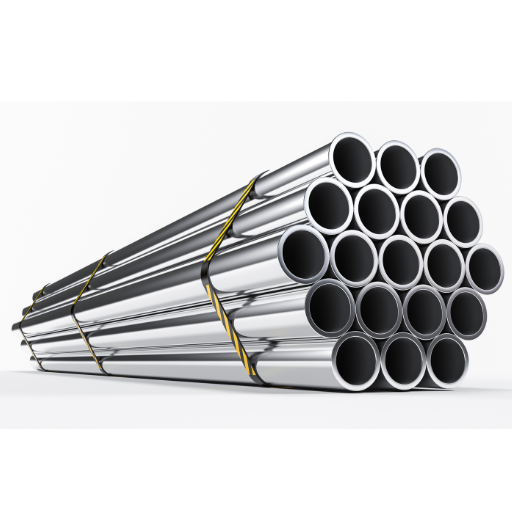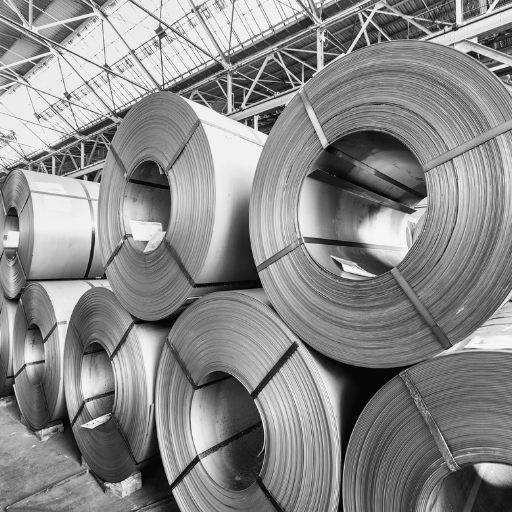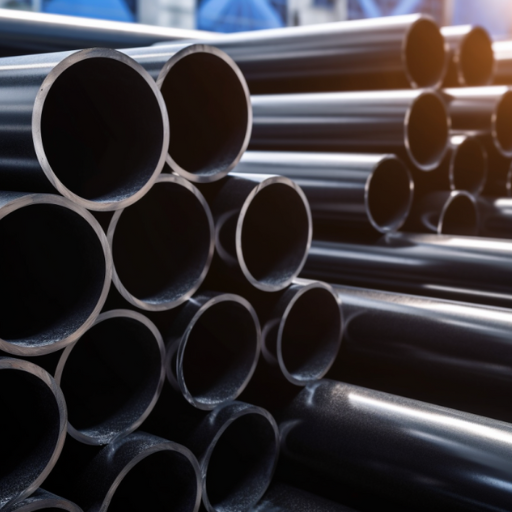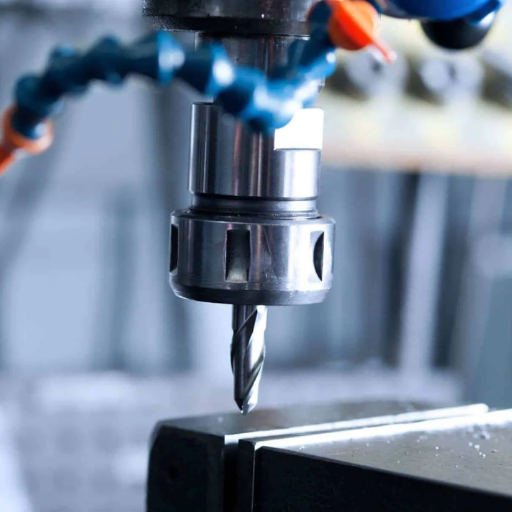This intense comparison will delve into the significant dissimilarities and likenesses between stainless steel and alloy steel, two of the most popular materials in the field. Despite both being derived from iron, they differ in composition and properties which make them useful in countless applications from construction to table cutlery. Versatility and strength are offered by alloy steel, an iron-made product mixed with a number of other elements while stainless steel is highly corrosive due to a lot of chromium. This article seeks to deconstruct these materials so that you understand why their specific characteristics make them suitable for different uses hence increasing your knowledge on their significance in contemporary engineering and design.
What is the difference between alloy steel and stainless steel?
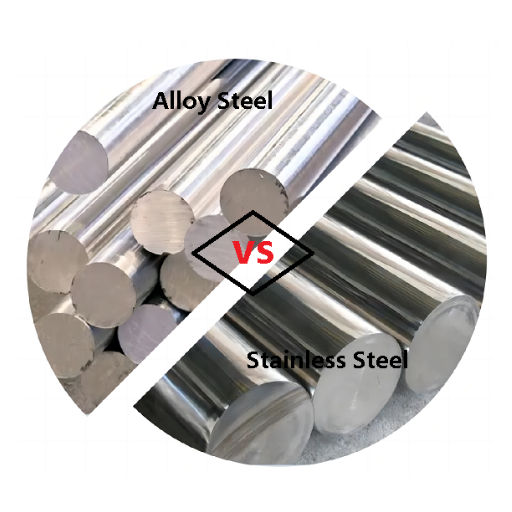
Alloy steel differs from stainless steel in terms of composition and its ability to withstand corrosion. Alloy steel is created by combining iron with other elements like carbon, silicon and manganese so as to enhance its mechanical properties and make it adaptable to different industrial uses. It can have highly variable compositions making it versatile but not uniformly corrosion resistant when compared to stainless steel. On the other hand, stainless steels are characterized by high chromium contents (at least 10.5%) that form a protective oxide layer on the surface, giving them an excellent resistance to rusting and most forms of corrosion. This makes them suitable for use in environments where corrosion prevention is crucial such as kitchen utensils, medical devices or even outdoor architectural features. The choice between these two steels will depend on specific application requirements including strength, durability and environmental conditions.
Comparison of Alloy Steel Properties
In discussing properties of alloy steels from my experience in this industry there are some important parameters which determine their utility and preference in different applications. These parameters include:
- Strength & Hardness: By varying the composition of alloy steel, its strength & hardness can be increased as required; hence it is particularly useful for applications involving toughness & wear-resistance such as heavy machinery & automotive parts construction.
- Toughness: Alloy steels still can have exceptional toughness despite their strengths; thus they have ability to absorb energy without fracturing that industries like aerospace may need for military purposes.
- Weldability & Formability: Some alloy steels offer good weldability & formability depending on specific alloying elements used. During manufacturing process, this adaptability is invaluable since complex shapes and structures may be produced.
- Corrosion Resistance: Though not inherently possessing much resistance to corrosive action as for instance stainless steel does, certain types of alloyed steels could be treated or modified with certain alloys improving their resistance towards corrosion which would be vital in case of severe environment exposure for diverse applications.
- Cost Effectiveness: In general, alloy steel can be more cost-effective compared to other materials with similar mechanical properties especially stainless steel. This is as a result of the varied composition that can be tailored for specific requirements without having to pay premiums for chromium and other elements.
By delving into these attributes in depth one would realize just how versatile this metal is (alloy steel) and why it is very crucial in today’s engineering solutions. These unique combinations are what allow engineers and designers to tailor-make materials to fit their respective projects perfectly by striking a balance between cost and performance.
Alloy vs Stainless Steel Corrosion Resistance
The fundamental difference in composition between alloy steel and stainless steel corrosion resistance is a paramount factor to consider. Stainless steel is known for containing high proportions of chromium, usually more than 10.5%, which is why it resists rusting like that. This chrome forms a thin oxidized layer on the surface of the metal, which corrosion can’t readily penetrate through. On the contrary, cast alloyed steels normally do not have the same inherent resistance to corrosion as stainless steel unless they are particularly alloyed with sufficient amounts of chromium or other protective factors. Therefore, when corrosion resistance is an important concern in an environment, stainless steel is often preferred because of its better oxide coating. However, some alloy steels when properly alloyed can be optimized to perform well in reasonably corrosive environments affording a good balance between performance and cost.
Advantages of Alloy Steel Over Stainless Steel
Although it is mostly associated with anti-corrosion properties; there are certain advantages that make a lot of people choose alloy steel over stainless steel for various purposes. One key advantage is their versatility: they can thus be made with different types of properties such as increased strength and hardness or enhanced wear-resistance if we want them so. This makes the material fit for multiple applications in diverse industries including: automotive industry, aerospace industry among others.
Moreover, compared to stainless steel one can argue that alloys steels tend to be more feasible money wise too. The production costs involved in manufacturing alloys steels are usually lower hence leading to overall project savings. For instance this aspect proves helpful especially on big projects involving lots of financial resources.
Besides these features, science has proven that under critical conditions; alloys steel outperform stainless steels most times. Thereby making it appropriate for use at elevated temperatures and pressures where normal stainless may fail due to stress (Cho et al., 2017). This makes it ideal for energy production systems and heavy machinery where materials have to withstand severe conditions during operation.
In conclusion, alloy steel is preferred over stainless steel because it is versatile, economical and can be used in extreme temperature conditions. As a result, engineers are able to determine the appropriate materials that will suit their requirements while ensuring efficiency and longevity.
Understanding the composition of alloy steel and stainless steel
Alloy steel differs from stainless steel in terms of composition and its ability to withstand corrosion. Alloy steel is created by combining iron with other elements like carbon, silicon and manganese so as to enhance its mechanical properties and make it adaptable to different industrial uses. It can have highly variable compositions making it versatile but not uniformly corrosion resistant when compared to stainless steel. On the other hand, stainless steels are characterized by high chromium contents (at least 10.5%) that form a protective oxide layer on the surface, giving them an excellent resistance to rusting and most forms of corrosion. This makes them suitable for use in environments where corrosion prevention is crucial such as kitchen utensils, medical devices or even outdoor architectural features. The choice between these two steels will depend on specific application requirements including strength, durability and environmental conditions.
Comparison of Alloy Steel Properties
In discussing properties of alloy steels from my experience in this industry there are some important parameters which determine their utility and preference in different applications. These parameters include:
- Strength & Hardness: By varying the composition of alloy steel, its strength & hardness can be increased as required; hence it is particularly useful for applications involving toughness & wear-resistance such as heavy machinery & automotive parts construction.
- Toughness: Alloy steels still can have exceptional toughness despite their strengths; thus they have ability to absorb energy without fracturing that industries like aerospace may need for military purposes.
- Weldability & Formability: Some alloy steels offer good weldability & formability depending on specific alloying elements used. During manufacturing process, this adaptability is invaluable since complex shapes and structures may be produced.
- Corrosion Resistance: Though not inherently possessing much resistance to corrosive action as for instance stainless steel does, certain types of alloyed steels could be treated or modified with certain alloys improving their resistance towards corrosion which would be vital in case of severe environment exposure for diverse applications.
- Cost Effectiveness: In general, alloy steel can be more cost-effective compared to other materials with similar mechanical properties especially stainless steel. This is as a result of the varied composition that can be tailored for specific requirements without having to pay premiums for chromium and other elements.
By delving into these attributes in depth one would realize just how versatile this metal is (alloy steel) and why it is very crucial in today’s engineering solutions. These unique combinations are what allow engineers and designers to tailor-make materials to fit their respective projects perfectly by striking a balance between cost and performance.
Alloy vs Stainless Steel Corrosion Resistance
The fundamental difference in composition between alloy steel and stainless steel corrosion resistance is a paramount factor to consider. Stainless steel is known for containing high proportions of chromium, usually more than 10.5%, which is why it resists rusting like that. This chrome forms a thin oxidized layer on the surface of the metal, which corrosion can’t readily penetrate through. On the contrary, cast alloyed steels normally do not have the same inherent resistance to corrosion as stainless steel unless they are particularly alloyed with sufficient amounts of chromium or other protective factors. Therefore, when corrosion resistance is an important concern in an environment, stainless steel is often preferred because of its better oxide coating. However, some alloy steels when properly alloyed can be optimized to perform well in reasonably corrosive environments affording a good balance between performance and cost.
Advantages of Alloy Steel Over Stainless Steel
Although it is mostly associated with anti-corrosion properties; there are certain advantages that make a lot of people choose alloy steel over stainless steel for various purposes. One key advantage is their versatility: they can thus be made with different types of properties such as increased strength and hardness or enhanced wear-resistance if we want them so. This makes the material fit for multiple applications in diverse industries including: automotive industry, aerospace industry among others.
Moreover, compared to stainless steel one can argue that alloys steels tend to be more feasible money wise too. The production costs involved in manufacturing alloys steels are usually lower hence leading to overall project savings. For instance this aspect proves helpful especially on big projects involving lots of financial resources.
Besides these features, science has proven that under critical conditions; alloys steel outperform stainless steels most times. Thereby making it appropriate for use at elevated temperatures and pressures where normal stainless may fail due to stress (Cho et al., 2017). This makes it ideal for energy production systems and heavy machinery where materials have to withstand severe conditions during operation.
In conclusion, alloy steel is preferred over stainless steel because it is versatile, economical and can be used in extreme temperature conditions. As a result, engineers are able to determine the appropriate materials that will suit their requirements while ensuring efficiency and longevity.
Applications and usage of alloy steel and stainless steel
What are Different Steel Grades and their Uses?
In the domain of metals and alloys, there is a vast range of steel grades which have been designed such that each grade has specific applications supported by its mechanical properties and chemical composition. For example, Carbon Steel – It comprises low carbon steel, medium carbon steel, and high carbon steels with varying amount of carbon content; hence differing in both strength, ductility as well as hardness. Low carbon steel is extensively utilized in construction due to its excellent weldability ability while high carbon steel is used for manufacturing cutting tools including wires because of its high strength.
Alloy Steel has better strength, toughness and wear resistance because it contains various elements like chromium, nickel and molybdenum. It has a critical role to play in the production process of pipelines for oil transportation as well as automotive components or even the aerospace industry.
Stainless Steels alloys themselves are varied but they have one characteristic in common amongst them all namely corrosion resistance. Austenitic stainless steels find application in appliances found within kitchens medical devices and marine environments. Ferritic stainless steels on the other hand are implemented in automotive parts whereas martensitic ones are used to make cutlery.
On the other hand Tool Steel is characterized by hardness and abrasion resistance since it is employed in making dies, cutters, molds etc. Some grades of this material like A2 possess good wear resistance while others like D2 exhibit higher hardness needed for more hours without wearing out.
It’s important to understand these differences when selecting appropriate grades of steel for desired applications guaranteeing long-lastingness operational efficiency at industrial levels plus economic worthiness at commercial stages.
Alloy vs Stainless Steel: Strength vs Durability
In my experience professionally speaking I’ve always had to choose either alloy or stainless steel depending on their ability to resist harsh weather conditions with regards to their respective uses’ need for sturdiness along with reliability over time. For instance, alloy steel is tailored to have specific properties like enhanced strength, and toughness; hence making it preferred in high load applications such as automotive parts or construction hardware which may be subjected to stresses. This implies that the material can be engineered to suit the mechanical requirements of a given project.
On the other hand, stainless steel’s higher corrosion resistance endows it with an advantage over rust susceptible environments. The fact that it finds application in medical equipments, kitchenware and marine appliances shows that this material can be relied upon as opposed to alloy steels under similar conditions. However stainless steel may not be as tough as some other alloy steels limiting its use for certain high stress applications.
Finally, whether you choose between alloy or stainless steel will depend on what your desired application requires when considering exposure to elements such as environmental hazards and mechanical forces taking into account how they affect strength and durability.
Various Steel Alloys’ Corrosion Resistance
Choosing the right steel alloys for projects involves considering their corrosion resistance especially where moisture, chemicals or salt compromises material integrity as seen from my viewpoint. Thus, I would say that understanding the corrosion resistance attributes of various types of steel alloys is a key requirement for reasoned choices aimed at longevity and reliability of your undertaking.
Firstly there is need to understand that Stainless Steel has been known for being resistant against corrosion due to chromium content in them. In this case chromium found in stainless steels forms a protective layer called chromium oxide on top thereby preventing all agents causing corrosion from reaching metal itself. Hence more often than not increasing amount of chromium improves quality of resistant nature exhibited by these metals meaning that they are best suited for use in medical equipment including kitchen utensils plus marine applications.
Alloy steels, although they might be engineered to provide increased strength and toughness, may still not possess the same corrosion resistance as stainless steels. But by including specific elements such as molybdenum, chromium and nickel, it is possible to modify the alloy steel for an intended environment. As an example, when carbon steel is supplemented with chromium and molybdenum it becomes less susceptible to atmospheric corrosion and oxidation that makes it applicable in outdoor construction.
In summary, regarding corrosion resistance of steel alloys:
- Chromium Content: Generally more amounts enhance resistance against oxidation and corrosion.
- Environmental Exposure: The particular circumstances like chemicals or saltwater necessitate the appropriate alloy composition.
- Added Elements: Resistance can also be enhanced towards some types of corrosion by adding metals similar to molybdenum and nickel.
By carefully selecting steel alloys that have a correct combination of elements we can guarantee that the material complies with required strength, durability standards and withstands environmental challenges.
Comparing various types of stainless steel with alloy steel
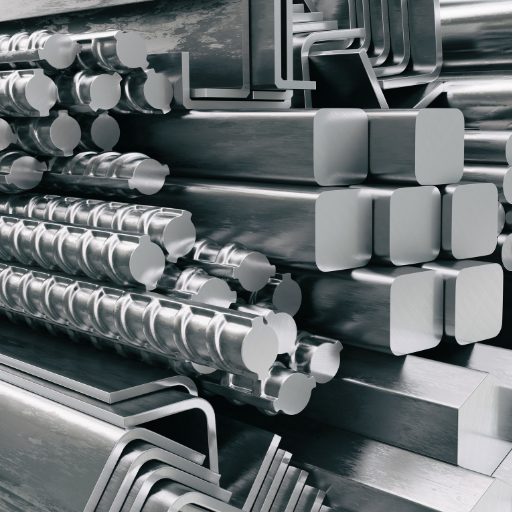
Ferritic, Austenitic and Martensitic Stainless Steel Distinguished
Based on my experience in the industry, I have come to understand that distinguishing differences among ferritic, austenitic and martensitic stainless steels is important for choosing suitable materials for any project.
Ferritic Stainless Steel has a higher chromium content of 12 to 17% but low carbon content which makes it magnetic. This combination gives it good corrosion resistance coupled with cost effectiveness thus makes it applicable in consumer appliances and automotive applications. This structure also provides moderate resistance to cracking and stress corrosion.
In contrast, austenitic stainless steel is the most common type used worldwide. It contains high levels of chromium (typically around 18-28%) and nickel (approximately 8-38%). It does not possess magnetic properties hence its use can be characterized by excellent formability as well as weldability. The increased nickel quantity ensures enhanced corrosion resistance while maintaining a stable austenite structure of the material at all temperatures therefore making it ideal for kitchen utensils, medical devices or industrial equipment.
Martensitic Stainless Steel possesses remarkable hardness and strength arising from heat treatment. Unlike ferritics or austentics, this however implies lower amounts of chromium (12-14%) as well as higher carbon contents. It is not resistant to corrosion because it is magnetized with a slightly higher percentage of carbon than other types.Accordingly, hardened steel is essential for cutlery, implements and surgical instruments.
Each type has its specific properties and uses based on its composition and structure, so choosing the right grade is crucial when working with stainless steel in any application.
Strength versus Toughness: Different Grades of Stainless Steels
In my experience working with different grades of stainless steel, one thing I have noticed is that their strengths differ considerably depending on which one you are considering. For instance, austenite grades are known for their exceptional toughness even at cryogenic temperatures, which results from high chromium and nickel contents. This makes it an excellent choice for applications requiring durability in extreme conditions.
On the other hand, martensitic grades are stronger than austenitic ones because of their higher carbon content but they have low toughness levels in comparison to them. Therefore, it is crucial when buying knives to know that surgical tools will lack this feature.
Comparatively, ferritic stainless steels tend to fall somewhere in the middle between good corrosion resistance and strength. Though it is weaker than martensitic steel due to its lower carbon content, it is still tough enough for some consumer appliances and automotive parts.
A criterion for selecting a stainless steel grade would therefore be how hard the material has to be versus how easily it can break under certain environmental conditions. I often advise clients on these choices so that the correct stainless steel grade can be matched with their needs thereby making sure that the project becomes successful.
When it comes to knife making, alloy steel plays a major role which underscores its adaptability and exceptional performance characteristics. From my experience, I came to understand that the different alloys which are combined in the steel have a great effect on the resilience, strength, sharpness and resistance to corrosion of a knife. For example, the presence of chromium results in an extremely high level of rust and other corrosive damages prevention thereby being fundamental for culinary knives that are usually subjected to both acidic and aqueous conditions as well. Carbon is another key alloy that enhances the hardness of blades such that they become sharper with higher edge retention required for precision cutting.
Such hybrid high carbon stainless steels combine both properties mentioned earlier; offering ruggedness necessary for daily use while also resisting both wear and tear and corrosion. When advising people who want to make knives, I always insist on choosing suitable element ratios depending on what these tools are going to be used for. In fact, whether designed for outdoor activities or kitchen works or even any general purposes in between will depend much on right selection of an alloying element because it has significant input towards overall life span thus giving evidence of my continuous exploration and support for unique application mechanisms through material analysis into solving problems with innovative solutions.
Which is better: alloy steel or stainless steel?
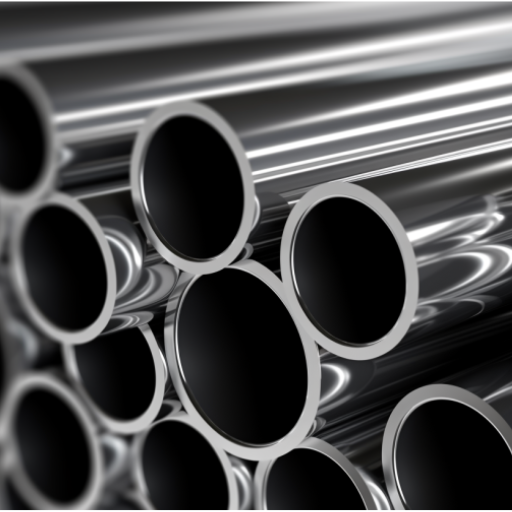
Differences in Mechanical Properties
When comparing alloy steel and stainless steel mechanical properties, it is important to recognize the fundamental distinctions of both that determine their uses and performances. Alloy steel can be modified through blending with different elements like nickel, molybdenum and chromium to have distinct features such as increased durability, hardness or wear along with impact resistance. This customizable nature allows alloy steels to excel in cases where high tensile strengths and long lastingnesses are required.
Stainless steel on the other hand mainly incorporates chromium for stronger resistance against rusting or oxidation. Its mechanical properties encompasses lower tensile strength as compared alloys but highly developed corrosion resistance features useful especially in environments having acid or caustic problems. In addition, the attractiveness it brings about and healthy characteristics makes it appropriate for culinary arts, medical as well as architectural works.
Therefore, the decision between using alloy steel and stainless steel depends on the particular mechanical properties needed for each application. For situation that requires high strength plus wear resistant material; alloy steels are usually preferred. Conversely, situations calling for materials which resist corrosion, look great and last long often refer to stainless steels.
Choosing Steel Rightly for Specific Applications
I advise many customers who come to me due to my expertise on choosing right kind of steel that suits their applications well which is dependent upon knowledge about unique advantages of an alloyed metal vis-à-vis stainless type metals. Alloyed iron is commonly used in extreme stress areas such as construction or automotive manufacture because of its inherent ability to maintain structural integrity under pressure conditions such as these two fields of engineering among others given its customizability towards enhanced durability and toughness.
Yet again within industry requiring long life span without corroding—food processing units, medical tools including those used by surgeons while operating may just need a small remodeling-also known as architectural buildings—stainless steels will always serve best results here because they are immune from normal rusting and steel aging. Their corrosion resistance coupled with a smooth aesthetic appearance is invaluable in these applications.
Ultimately, this requires an understanding of what each type of steel can offer regarding their mechanical properties as related to the application’s specific requirements. This means that one should know all these fine details before making any decision that will perform as expected and for a long time.
What is the Difference Between Alloy Steel and Stainless Steel?
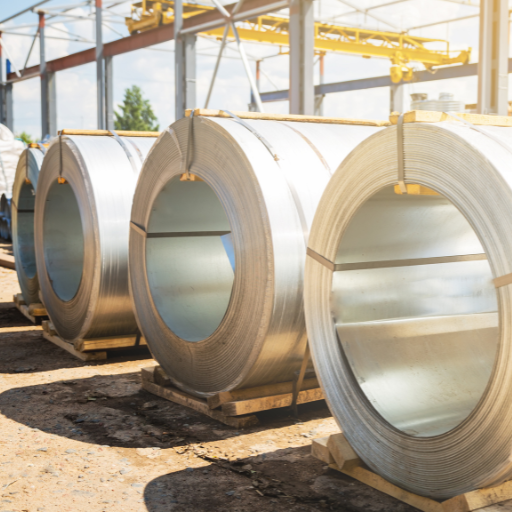
Composition of Alloy Steel
Thinking about the composition of alloy steel is like peeping under a car engine; you have to look inside it. In simple terms, alloy steel is made by adding iron to other materials, so as to improve its qualities. These elements may range from carbon, nickel, copper, chromium and molybdenum among others. Each of these elements plays its own special role in determining the character of the steel.
For example, hardness and strength are improved when carbon is added; hence, it is essential for material that supports great weight as used in construction works. On the other hand, chromium enhances corrosion resistance that makes steel more robust against rusting and decay. It is this personalized approach to making alloy steel versatile and important in various sectors.
For example, consider how different ingredients you choose for a cake will influence its taste or texture on comparing them with stainless steel grades whose performance varies depending upon their constituent mixtures. This discipline goes through choosing and combining those very elements which can turn alloy steels into something suitable for even highest structures of buildings up to powerful machineries.
Main Characteristics of Stainless Steel
Another key property that stands out in stainless steel is its high resistance towards corrosion due to rust thus making it indispensable in environments where this could be an issue. The secret behind this rust-free nature lies within the chemical content especially chromium contained in stainless steels. Minimum 10.5% Chromium contained in Stainless Steel reacts with oxygen found in air forming an oxide layer on the surface of the material which acts as a skin preventing water and oxygen from reaching the metal’s surface underneath causing it to deteriorate.
Additionally, one more thing that makes stainless steels unique is self-healing ability whereby excess chromium present reacts with atmosphere oxygen once again thus renewing barrier maintaining integrity of material damaged by removal or scratching-off protective film (chromium oxide). This feature ensures that maintenance costs remain minimal because aging does not destroy the original finish of stainless steel materials.
It is also important to note that stainless steels are very versatile. There exist numerous grades which have been tailored for different applications. Some grades work excellently both in high and low temperatures and therefore they can be effectively applied in cryogenic storages as well as furnaces with high heat level. Other grades can be magnetized for usage in electronics while some other ones are easily weldable.
Simply put, if alloy steels were a cake recipe that you customize by changing ingredients according to the occasion, then stainless steels would be your reliable cake pan that never sticks and remains clean after use. It possesses long life span, resists rusting and appearance maintenance due to which it is commonly found in houses’ utensils found in kitchens, as well as biomedical surgical tools or construction elements.
Comparisons on Corrosion Resistance
Comparing corrosion resistance is something I find extremely interesting and very important in materials science. Stainless steel, as we have discussed, has excellent corrosion resistance due to the chromium oxide layer. It’s like a superhero’s shield, perpetually ready to protect the underlying steel from rust and decay. On the other hand, comparing this with other materials shows very different levels of corrosion resistance.
For example, carbon steel does not form similar protective layers because it lacks chromium content required for that; hence it corrodes much more easily. This means more maintenance is necessary including painting or coating to prevent rusting. In contrast, metals such as aluminum also have an oxide coating but theirs cannot compare to stainless steel’s chromium oxide shield in terms of strength or self-repair.
To put it simply if corrosion resistance was a survival game stainless steel would be one of the last survivors because it can fight off rust and fill any crevices on its surface with a healing ability inherent in itself. That is why stainless steel is so widely used in environments where hygiene and durability are essential as seen in kitchens and hospitals among others . More than just looking clean, it stays clean without much effort which makes it hard for any other product to compete with it on that front.
Advantages and Disadvantages of Alloy Steel and Stainless Steel
Exploration of High Strength in Alloy Steel
Among the materials science, alloy steel is outstanding due to its extraordinary strength and versatility. This mostly arises from carbon when it combines with various other elements including manganese, silicon, nickel and chromium. These additions significantly enhance the mechanical properties of the steel making it more resistant to high pressures and forces that would normally cause it to change its shape or break easily. This makes alloy steel the material of choice for applications requiring high strength and durability such as bridges, buildings and automotive industry. The same can be adjusted to meet specific requirements by altering the alloys hence making this type of steel both strong and flexible.
An Analysis of Stainless Steel Corrosion Resistance
Stainless steel has an unparalleled corrosion resistance within materials science mainly because chromium is present in it. When stainless steel comes into contact with air, the chromium then forms a thin layer which cannot be seen on top of it referred as chromium oxide (Cr2O3). Thus forming a protective film that shields moisture or air from further rusting or corroding it. More so, if oxygen is around the damaged area recovers through self-healing process. Owing to its ability for self-repairing, stainless steel is instrumental in environments where there is need for resisting corrosive effect; such as marine use, chemicals processing facility as well as food processors industry among others. It means that there will be some long-term cost savings coupled with environmental benefits since they maintain appearance and integrity over a considerable period without needing frequent replacement or maintenance thus positioning them above others.
Comparison of Tensile Strengths
A material’s tensile strength is one fundamental indicator whether it would hold together under tensile stresses which are important in many industrial settings. In general terms however, when comparing these two types based on tensile strength between them; alloy steels are stronger than their stainless counterparts. It is attributed to their diversified composition that can be specifically fabricated for increased strength and resistance under high-stress conditions. Nevertheless, stainless steels usually have lower tensile strengths though it is highly durable and can withstand environmental factors. Yet, the specific hardness of stainless steel can greatly influence its strength with some higher-strength grades challenging alloy steel dominance in some applications. This comparison underscores the significance of choosing appropriate materials based on explicit application needs that strike a balance between strength, corrosion resistance as well as other mechanical properties to attain optimal results in terms of both performance and longevity.
Properties of Alloy Steel vs Stainless Steel
Iron and Carbon as an Alloy of Alloy Steel
Alloy steel is primarily an alloy that is made up fundamentally of iron and carbon which forms the basic composition of steel, but this is where it gets interesting for a subject matter expert in the industry; when we talk about alloy steel, we are not referring to material that is just iron and carbon. In fact, it includes a number of other elements in specific quantities which greatly impacts its properties and applications. Additional elements include chromium, nickel, manganese, molybdenum, vanadium amongst others.
Each of these above-mentioned elements play indispensable roles:
Chromium strengthens the metal making the alloy more rigid, tougher and wear resistant as well as improve corrosion resistance.
Nickel increases strength and toughness without significantly reducing ductility while also improving resistance to corrosion and oxidation.
Manganese improves strength of the metal by hardening it increasing its wear resistance level besides assisting in deoxidizing during steel making process.
Molybdenum enhances strength and hardness at high temperatures making it particularly useful for industrial applications requiring heat resistance.
Vanadium results in increased impact resistance including shock loads’ toughness as well as improved hardness respectively.
By understanding these parameters one can easily justify why each element has been included into composition of alloy steels thus improving their performance in various applications. Simply put – through careful adjustment of alloy steels’ compositions – their properties can be tailored to fit much wider range industrial uses than simple carbon steel leading to extremely versatile materials that have become indispensable within our industry.
Differentiating Types Of Stainless Steels
Stainless steel has carbon, iron, chromium (minimum 10.5% content) because it does not rust easily. On the contrary however there are several types of stainless steel made differently using certain additions as alloys to improve on their features. Some common types include;
Austenitic Stainless Steel: This type contains relatively higher amounts of chromium as well as nickel giving it the highest resistance to corrosion. It is non-magnetic and cannot be hardened by heat treatment thus it is ideal for making utensils in the kitchen, medical equipment as well construction materials.
Ferritic Stainless Steel: contains higher amounts of Chromium but lesser carbon levels when compared to Austenitic steel. It is magnetic, has better engineering properties but less corrosion resistance hence mostly used in automotive parts and appliances.
Martensitic Stainless Steel: This one is similar to ferritic with more carbon content allowing it to be easily hardened and tempered. The hardening applications such as tooling and cutlery are commonly made from this material.
Duplex Stainless Steel: Combines the features of austenitic and ferritic, offering high strength and excellent resistance to corrosion and stress corrosion cracking. Ideal for chemical processing and marine applications.
While comparing alloy steels with stainless steels on basis of strength and durability, alloy steels are generally stronger because they contain additional materials such as molybdenum and vanadium that enhance hardness as well as wear and impact resistance. However, stainless steel is far superior when it comes to corrosion resistance, maintaining its strength over a wide temperature range due its high chromium content. Ultimately – when choosing between these two options – one should take into account specific requirements of an application including environmental conditions coupled with mechanical stresses involved.
Factors affecting Alloy vs Stainless Steel Strength & Durability
The relative robustness and resistance to corrosion of alloy steels and stainless steels greatly depend on the way they are composed and the environment they are used in. For example, it is possible to make alloy steel possess high strength by doping it with various elements such as chromium, molybdenum, and nickel for heavy duty applications that need toughness and abrasion resistance. Conversely, stainless steel possesses exceptional corrosion resistance attributable mainly to its high chromium content which keeps it looking new over time even under extreme conditions. Though its tensile strength may not always match that of alloy steel, this material’s longevity in corrosive environments makes it suitable for use in situations where it has to be continuously exposed to moisture or chemicals. Therefore, whether one opts for alloy or stainless steel will depend on how best they wish to balance mechanical resilience against a requirement for immunity against rusting while at the same time considering cost implications and relevant applications’ circumstances.
Applications and Uses of Alloy Steel and Stainless Steel
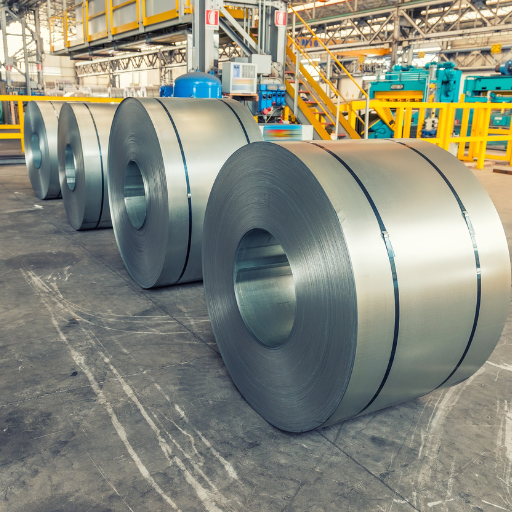
Alloy Steel in Knife Making
Alloy steel is one of the unique materials you’ll find in the knife market. It’s a material that can be equated to a reliable friend who’s strong enough and flexible for various tasks. This means, alloy steel has got the right mix of hardiness and elasticity which make it extremely robust compared to other steels. Durability is an attribute associated with these knives made of alloy steel since they will maintain their sharpness over time as well as resist most forms of tear and wear. Unlike stainless steel, that focuses majorly on fighting off rust and corrosion, alloy steel is all about muscle and performance under pressure. This does not mean however that these kinds of knives cannot resist corroding agents but in some instances may require extra efforts like regular oiling for maintenance purposes to keep them as good as new. In any tasks calling for precision and stamina like wilderness survival or professional kitchen use, knives made out of this highly sought-after metal are always considered the best option by many people. These are the unsung heroes who never break under the toughest assignments.
Industrial Applications of Stainless Steel
Stainless-steel remains unbeatable when it comes to industrial uses because of its extraordinary ability to withstand corrosive forces as well as heat conditions. Having been in this trade for long, I have observed wide usage of stainless-steel in places where both these qualities are so crucial. Stainless steel has a degree flexibility making it indispensable for building processing plants used by chemical producers or food processors among others where purity must be maintained throughout their lifespan. Also, high temperature resistant property has made it possible for this metal to be used on Heat exchangers, boilers and other types of equipments found within power generations plants or refineries. Aside from just physical characteristics, one more advantage enjoyed from stainless-steel is its attractive nature whereby; it gives modern clean lines on architectural details as well as infrastructure works unlike other metals. With versatility and endurance, stainless steel has enabled industries to become more efficient and sustainable, hence its role as a cornerstone of modern industrial practices.
Durability in Extreme Conditions
The exceptional durability that materials exhibit when subjected to extreme conditions cannot be taken lightly especially from my experience cutting across different industries. Alloy steel and stainless steel are among the few materials that can survive those tough conditions where other materials would have disintegrated. Alloy steel stands out in situations requiring high tensile strength and long lastingness like heavy machinery manufacture or automotive components exposed to constant stress due to its designed composition. However, in cases where hygiene, longevity or harsh chemical environments are involved such as food processing or medical equipment, stainless steel will take it all because of its resistance to corrosion and extreme temperatures. Evaluating these attributes against their respective environments is crucial for operational excellence and reliability amidst nature’s adversities.
Reference sources
-
Online Article – “Understanding the Differences Between Alloy Steel and Stainless Steel” (ThomasNet)
- Summary: ThomasNet is a well-respected platform in the industrial and manufacturing sector, offering detailed articles on various materials and their applications. This particular article provides a comprehensive overview of both alloy steel and stainless steel, emphasizing their composition, properties, and common uses. It also delineates the key differences between these two types of steel, such as corrosion resistance, mechanical properties, and cost implications.
- Relevance: This source is highly relevant for readers seeking a foundational understanding of the distinctions between alloy steel and stainless steel. The credibility of ThomasNet as an industry authority adds weight to the information presented, making it a reliable reference point for professionals and enthusiasts alike.
-
Academic Journal – “Properties and Applications of Stainless and Alloy Steels” (Journal of Materials Engineering and Performance)
- Summary: This peer-reviewed article offers an in-depth scientific analysis of both stainless and alloy steels, focusing on their material properties, engineering performance, and suitability for various applications. It includes discussions on the microstructure of these metals, how different alloying elements affect their behavior, and recent advancements in steel technology.
- Relevance: For individuals interested in a technical deep-dive into the metallurgical aspects of alloy and stainless steels, this academic journal article provides authoritative insights backed by research. It’s particularly suited for engineers, students, and professionals in the materials science field who require detailed, scientific data for their work or studies.
-
Manufacturer Website – “Comparative Guide: Alloy Steel vs. Stainless Steel” (Outokumpu)
- Summary: Outokumpu, a global leader in stainless steel manufacturing, offers a comparative guide on their website that highlights the practical differences between alloy steel and stainless steel from a manufacturer’s perspective. This guide covers aspects such as composition, resistance to corrosion and heat, strength, applications, and environmental sustainability. It also provides guidance on selecting the appropriate type of steel for specific applications.
- Relevance: Coming directly from a manufacturer known for its expertise in stainless steel, this source offers an industry perspective that combines technical detail with practical applications. It is invaluable for decision-makers in industries considering the best material choice for their projects, offering clarity on the benefits and limitations of each type of steel.
Frequently Asked Questions (FAQs)
Q: What is the main difference between alloy steel vs stainless steel?
A: The main difference lies in their composition and corrosion resistance. Stainless steel is a type of steel that contains chromium, making it resistant to rust and corrosion, which makes it a preferred material for appliances and cooking utensils. Alloy steel, however, refers to a wide range of steel varieties that incorporate various elements in different quantities to enhance certain properties, such as strength and durability. Unlike stainless steel, alloy steel’s corrosion resistance varies depending on the added elements.
Q: How is low alloy steel different from high alloy steel?
A: Low alloy steel contains a smaller percentage of alloying elements, typically less than 5%, whereas high alloy steel, including many types of stainless steel, contains a higher percentage, often above 8%. This difference affects the material’s strength, durability, and resistance to corrosion, with high alloy steel generally offering superior properties.
Q: In what applications would you use stainless steel vs alloy steel?
A: Stainless steel is often used in applications requiring corrosion resistance and hygiene, such as kitchen appliances, medical devices, and chemical processing equipment. Alloy steel, due to its varied properties, is used in a wide range of applications, including automotive parts, construction machinery, and pipelines. The choice between stainless steel and alloy steel depends on the specific requirements of the application, such as strength, durability, and environmental conditions.
Q: Can low alloy steel be considered as durable as stainless steel?
A: Low alloy steel is designed to offer enhanced mechanical properties and, in some cases, improved corrosion resistance compared to carbon steel. However, stainless steel is inherently more resistant to corrosion, making it more durable in environments that are acidic, moist, or otherwise corrosive. Low alloy steel can be treated or coated to improve its corrosion resistance, but stainless steel is usually the better option for applications where durability and resistance to corrosion are critical.
Q: What are the cost differences when comparing stainless steel vs alloy steel materials?
A: Generally, stainless steel is more expensive than alloy steel due to its added chromium content, which provides its corrosion-resistant properties. The cost can vary significantly depending on the specific types of each steel and their composition. High alloy steels, including certain types of stainless steel, can be more costly due to their specialized properties and the higher percentages of expensive alloying elements like nickel and molybdenum.
Q: Why might an engineer choose alloy steel over stainless steel for a project?
A: An engineer might opt for alloy steel over stainless steel if the project requires specific mechanical properties such as increased strength, hardness, or resistance to wear and abrasion that can be achieved through the addition of alloying elements. Additionally, if the project conditions do not demand high corrosion resistance, or if cost is a significant concern, alloy steel could be a more suitable and economical choice.
Q: What are some common types of steel materials, and how are they categorized?
A: Steel materials are generally categorized into carbon steel, alloy steel, and stainless steel. Carbon steel is one of the most common types and is categorized based on the carbon content: low, medium, and high carbon steel. Alloy steel is a type of steel that contains specified amounts of alloying elements to achieve particular physical properties, and it’s split into low alloy and high alloy categories. Stainless steel is a highly corrosion-resistant steel alloy containing a high percentage of chromium, and it includes varieties like 304 and 316 stainless steel, each with different properties suited for various applications.
Q: When comparing alloy and stainless steel, which steel is better for outdoor applications?
A: For outdoor applications, stainless steel is generally better due to its superior corrosion resistance. Its chromium content forms a protective layer that shields the steel from moisture and prevents rust formation. While alloy steel can be treated to improve its resistance to corrosion, stainless steel is inherently more resistant to the elements, making it a more suitable choice for outdoor applications where exposure to weather is a significant concern.



